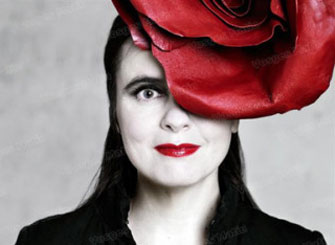
Regular readers of Amélie Nothomb’s literary output might be forgiven for finding her latest offering, Barbe Bleue, somewhat familiar. In this novel, timed as always to coincide with la rentrée, the story centers on a person entering a mysterious home and becoming enamored with all things champagne. In Le Fait du Prince (2008), a person enters a mysterious home and becomes enamored with all things champagne… It’s all too much a case of déjà lu. The reviewer on that occasion suggested that various champagne producers might buy up the film rights to the book, and I am convinced that Nothomb is sponsored by at least one such producer. Or she likes bubbly. A lot.
Before such familiarity begins to breed its usual dose of contempt, I must add that there is enough distinction in the story and writing to warrant reading this version. While Nothomb’s plots are almost always wildly implausible, she is never dull. As the title suggests, Barbe Bleue is Nothomb’s conscious reworking of the famous Charles Perrault fairy tale (which itself was transformed into a magnificent one-act opera by the Hungarian composer Béla Bartók). A young Belgian woman, Saturnine, responds to an advert to rent, at a very reasonable rate, a luxurious apartment in the plush seventh arrondissement in Paris, owned by don Elemirio Nibal y Milcar, a man who never leaves his residence. She can have full use of the many rooms in the property but is forbidden from entering one room. Eight previous tenants, all female, lived there, and each one disappeared in mysterious circumstances. Saturnine is determined to enjoy the many luxuries on offer, including plentiful supplies of vintage champagne, but not to fall under the spell of her sinister landlord.
The secret room is used, according to Don Elemirio, as a darkroom for his photography, but during the course of the story, he never photographs anything, which inevitably arouses Saturnine’s curiosity. Without giving too much of the plot away, it turns out that he has only taken one single photo of each of the women who previously disappeared.
As always, Nothomb’s prose is immensely readable: much of the book consists of dialogue between the two protagonists. Even though her version of the Bluebeard story seems as far removed from modern times as the original version (not one disappearance seems to have occasioned a single police investigation), both the literary allusions and the discourse on photography and its functions give the text a depth that justifies further consideration.
In the meantime, Amélie Nothomb will no doubt be cracking open another bottle of rare and extremely expensive champagne to celebrate the publication of her 30th book in 20 years.
Favorite